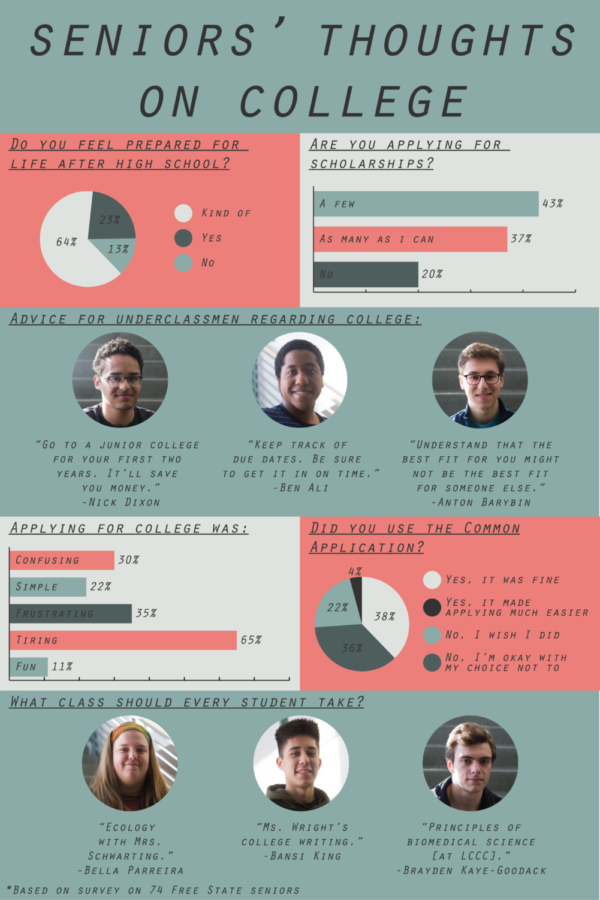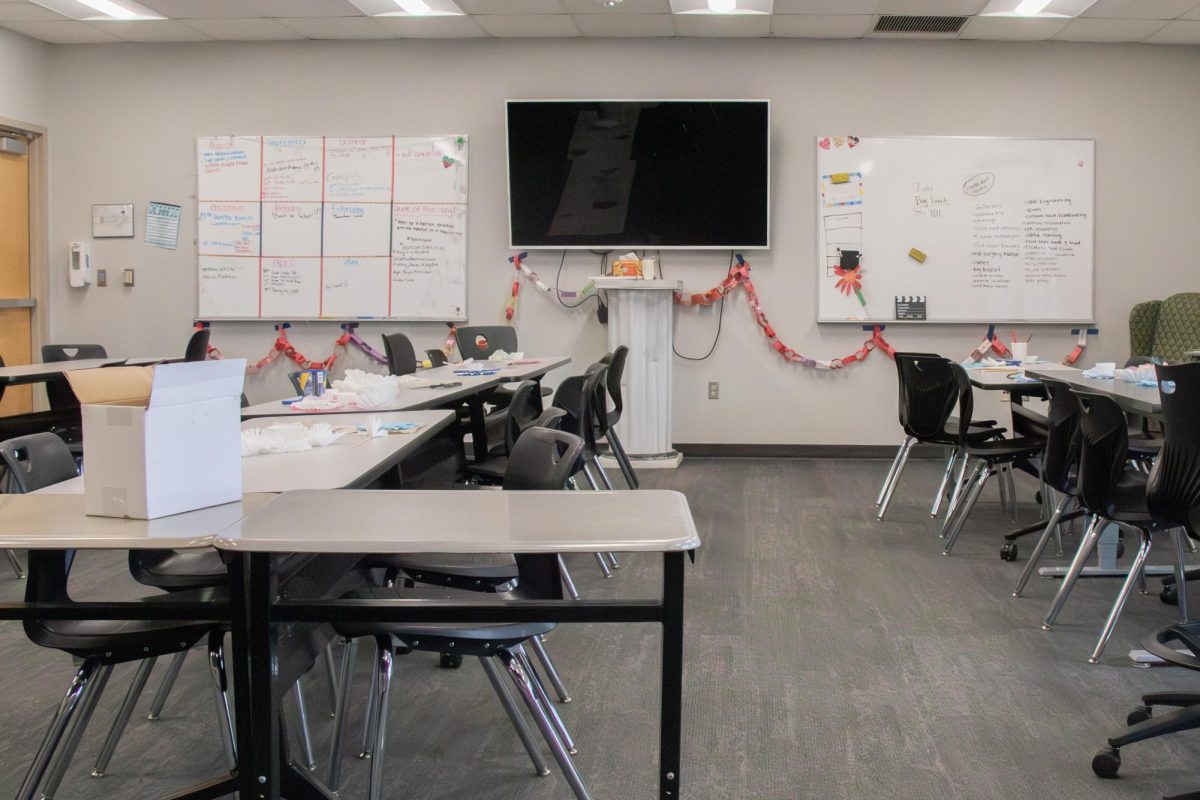Editor in Chief Shares Stressors, Advice in Applying to College
March 2, 2018
College. A looming word that evokes fear and anticipation over the wee naive seniors who just want to continue their academic career in faith and fervor. College is the first step towards your dream job, or your completely underwhelming, more reasonable option that your family berates you about every other day.
The problem with college is largely in the application process. I’ve listed my, and many others, issues with this process below:
1. No one tells you anything. Every senior who plans to attend college is essentially having to teach themselves how to apply. Nearly all initial tribulations of applying to college stem from this issue. I’ve done it, you’ve done it, you will do it. When I was beginning to apply, this issue was anger inducing and glaringly obvious in the concept that our education program should teach us how to further our educational careers. Whether it’s an assembly at the end of your junior year or periodic meetings during classes, this is extremely necessary, as the college application process should begin relatively early, especially with ACT and SAT tests needing to be taken earlier on so you can take it again and again if you’re dissatisfied with your score.
2. Searching for the right school is the hardest thing to ever exist. Looking for good colleges is extremely challenging. I recommend niche.com, which ranks colleges based on location, major, cost, value, etc. This has helped me find nearly all the colleges I ended up applying to, and brought up the possibilities of many others. Location and cost seem to be the two biggest aspects for me currently for my aspired undergraduate education. Conservatories, art schools and other forms of collegiate education can vary school to school. Most that I looked at are way more program-based over other aspects.
3. It costs SO MUCH money just to apply. The U.S. News & World Report found that the average application fee is $37.88. The highest application fee is found when applying to Stanford, coming in at $90. Over half of the colleges I applied to did not have an application fee. Some schools don’t require a payment in general and some don’t based on if you’re applying early.
4. Deadlines are unclear. Deadlines can range over a span of months. The earlier, the better. There are three kinds of deadlines: Early Action, Early Decision and Regular Decision. Early Action is binding, meaning if you get accepted, that is your school. Early Decision is commonly a November 1st deadline and puts you in the first pool of applicants. Regular Decision puts you in a pool of applicants after Early Decision. For some schools, those who applied in Regular Decision will be accepted based on the spots left from Early Action/Decision applicants. I applied to most Early Decision, but after missing a few deadlines (DON’T MAKE MY MISTAKES), applied Regular Decision.
5. Common App is the way to go. I advise using the Common Application. It makes applying so much easier, as you include your grades, demographics, etc. only once and then can fill out the college-specific essays/questions in a much more practical manner.
6. Scholarships. Do they exist? Are they real? Which are real?? Your best bet is scholarships from your future school and loans/Pell Grants through the Free Application for Federal Student Aid (FAFSA). Don’t let money from potential scholarships go unclaimed. College is expensive. You need it. I’ve spent a long time searching for other scholarships, those infamous thousands of dollars that go “unclaimed.” I’ve come across scholarships that lead you to sketchy websites where all you need to do is write an essay on the importance of mascara or your idea for the next technological innovation, but is it real?
Get started early. Search early. Prepare early. You got this.
God help us all.










